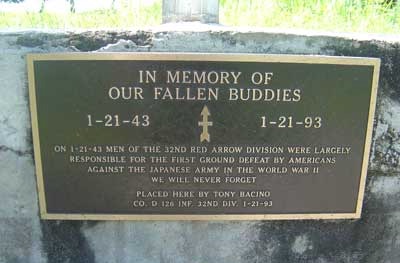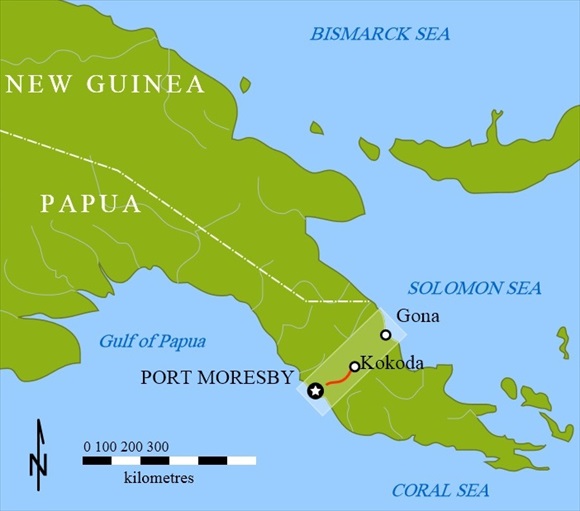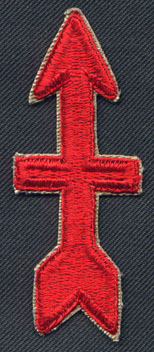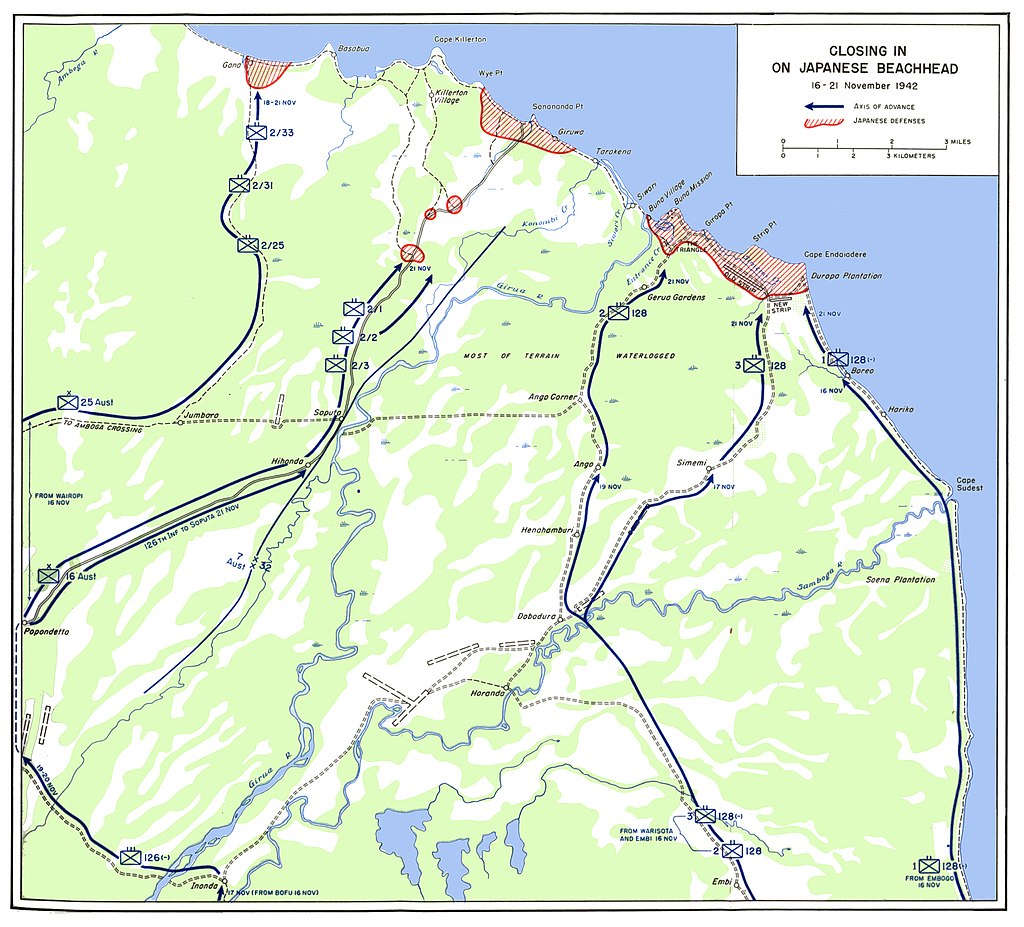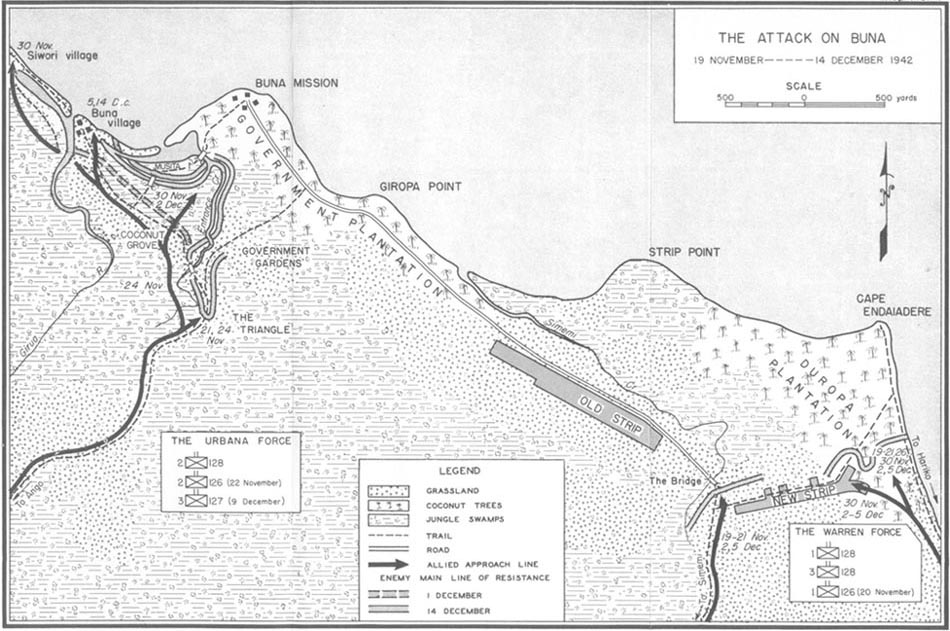32nd "Red Arrow" Infantry Division - Fallen Buddies Plaque
Details:
In the former town center attached to the foundation of a building in ruins.
From the 32nd Infantry Division Association website regarding the Battle of Buna:
The cost had been great. There is always the possibility of minor error in the casualty figures for a campaign conducted under the conditions which obtained throughout the Papuan campaign, but the Department of the Army's official totals can be accepted as sufficiently accurate to establish the final statistics for the cost of death and suffering.
“The 32d Division had 690 officers and men killed in action or died of wounds, 1,680 wounded and 62 missing in action. In addition, 17 died of battlefield injuries and 287 others had to be evacuated because of battlefield injuries. Viewed in cold-blooded comparison with battle casualties of some divisions in other theaters, these losses were relatively low. What makes the achievements of the Division noteworthy from the statistical point of view is its continued progress during this period in spite of 7,125 nonbattle casualties and the fact that many men who remained on duty were actually sick. COL Warmenhoven, the Division surgeon, had the temperatures of 675 men taken shortly before the end of the campaign. These men were from all three combat teams and the check was made to get a picture of the health of the whole Division. The results showed that 53 percent of the group were running temperatures between 99 and 104.6 degrees. Malaria was the principle cause. (Malaria was also difficult to cure and, in spite of the best medical efforts 2,334 officers and men had to be dropped from the strength of the Division in September 1943 as unfit for combat.)
“The 32d Division never had more than 11,000 officers and men in the combat area. The total casualties nearly equal this number. The hardest hit regiment - the 126th Infantry - entered combat with 131 officers and 3,040 enlisted men; it had 32 officers and 579 men for duty at the end of the campaign.
Years later, General Eichelberger wrote in his book:
“Buna was the first Allied Ground Force victory in the Pacific (the Buna Campaign was ended before the fall of Guadalcanal) and it was bought at a substantial price in deaths, wounds, disease, despair and human suffering. No one who fought there, however hard he tries, will ever forget it. I am a reasonably unimaginative man, but Buna is still to me, in retrospect, a nightmare. This long after, I can still remember every day and most of the nights as clearly as though they were days and nights last week.
“Buna Village and Buna Mission are godforsaken little places on the inhospitable northern coast of New Guinea. A few score native huts and the coconut plantations around them represented, before the war, Buna’s sole claim on an indifferent world’s attention.”
Monument Text:
In memory of our fallen buddies
1-21-43 (32nd Divsion Symbol) 1-21-93
On 1-21-43 men of the 32nd Red Arrow Division were largely responsible for the first ground defeat by Americans against the Japanese Army in World War II.
We will never forget.
Placed here by Tony Bacino, Co D 126 Inf 1-21-93.
Commemorates:
People:
Units:
126th Infantry Regiment, 32nd Infantry Division
127th Infantry Regiment, 32nd Infantry Division
128th Infantry Regiment, 32nd Infantry Division
32nd Infantry Division
8th US Army
Wars:
WWII
Battles:
New Guinea (1943-1944)
Pacific Theater
Other images :

